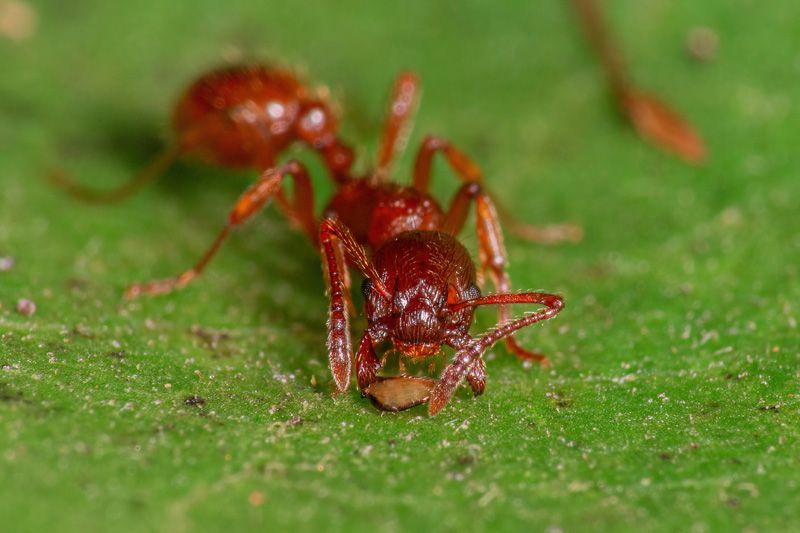
European Fire Ant – Myrmica rubra Linnaeus
European Fire Ant – Myrmica rubra Linnaeus
Description of Insect:
The European fire ant (Myrmica rubra), also known as the common red ant, is an aggressive ant species native to Europe and Asia. It is notorious for its painful sting and highly territorial behavior, and lives under stones, fallen trees, and soil.
These ants are reddish-brown in color and typically measure between 4 to 6 mm in length. Their bodies are segmented and covered with fine hairs. The worker ants have a distinguishing antennae, with 12 segments and a distinct 3-segmented club, which helps them navigate their surroundings. There are two kinds of queens. One that is slightly larger and darker than the workers, and others the same size as them, called “microrubras.”
European fire ants form dense, polygynous colonies, meaning multiple queens coexist within the same colonies. The queens can live up to 7 years, helping its spread in the surrounding areas. This trait allows them to expand rapidly, creating extensive interconnected colonies.
Life cycle of European Fire Ant
The European fire ant follows a complete metamorphic life cycle, progressing through four stages: egg, larva, pupa, and adult. They form polygynous and polydomous supercolonies with almost 100 queens per nest. Queens usually overwinter alone, or in groups before laying eggs. From egg hatch to egg production, it takes approximately 2 years to start a colony of European fire ants. Once the pupae is fully developed, adult ants emerge, taking on roles as workers, queens, or males.
Workers are responsible for maintaining the colony, foraging for food, and caring for the young, while males focus solely on mating. Queens, the reproductive members of the colony, are responsible for laying thousands of eggs annually. These ants also spread by “budding” during which a queen along with some worker ants split, and form a new colony.
Damage they cause:
The European fire ant is classified as an invasive species in North America, where it poses significant economic, ecological, and public health threats.
- Ecological Impact: These ants are highly competitive and often outcompete native ant species by monopolizing food sources and nesting sites. Their aggressive nature allows them to dominate local ecosystems, reducing biodiversity and disrupting food chains. European fire ants have been observed to increase the population of plant-feeding pests, such as aphids and scales. In areas where they invade, native flora and fauna can suffer significant declines, leading to shifts in ecosystem dynamics.
- Health and Public Nuisance Impact: Unlike some invasive ant species, European fire ants are particularly aggressive toward humans and animals. They have a painful sting that injects venom, causing red, painful, swollen welts. Some individuals may experience severe allergic reactions, including anaphylaxis, requiring immediate medical attention. These ants do not hesitate to sting when their nests are disturbed, making them a serious nuisance in residential areas. Homeowners often find them invading yards, gardens, and even entering homes in search of food and moisture.
